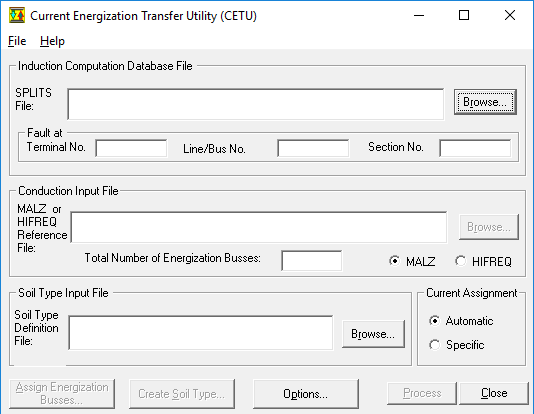CETU
CETU is an interference analysis software utility that automates the transfer of leakage currents computed by the Right-of-Way Pro software package and the SPLITS computations module to a conductive analysis software package such as the MultiGroundZ software package (MALZ computation module) or the MultiFields software package (HIFREQ computation module). This is useful, for example in order to carry out the conductive interference analysis required to obtain the total (i.e., capacitive, inductive and conductive) interference levels. These leakage currents usually correspond to transmission line tower currents or substation ground currents injected into soil during fault conditions in substations or along the transmission lines as explained hereafter.
The induced potentials computed by SPLITS or Right-of-Way Pro represent the capacitive and inductive components of the potential impressed on the exposed circuits (pipelines, rail tracks, telecommunication lines, etc.) during fault conditions. In the absence of nearby energized buried metallic structures, the local soil potential will be near that of remote soil (i.e., zero) and the stress voltages of the exposed circuits will simply be equal to the induced potentials. This is typically the case when conducting a steady-state interference analysis where no significant conductive interference exists.
In most cases, the exposed circuit is near grounding systems such as electric substations, power plants, transmission line structures and distribution poles. Therefore, a conductive component also exists due to the energization of the surrounding soil by the current leaking from these grounding systems. Consequently, it is necessary to calculate the conductive component of the exposed circuit using the MALZ or HIFREQ computation modules of the CDEGS software package. The total potentials are then determined by combining the capacitive and inductive potentials computed by SPLITS or Right-of-Way Pro with the conductive potentials obtained from MALZ or HIFREQ.
In order to determine the conductive components of the interference, it is necessary to transfer the known fault current distribution from the SPLITS or Right-of-Way Pro computation results to MALZ or HIFREQ. This can be done by manually extracting the required leakage currents from the inductive computation results (a lengthy operation that is prone to errors) or automatically and reliably using the CETU utility.


